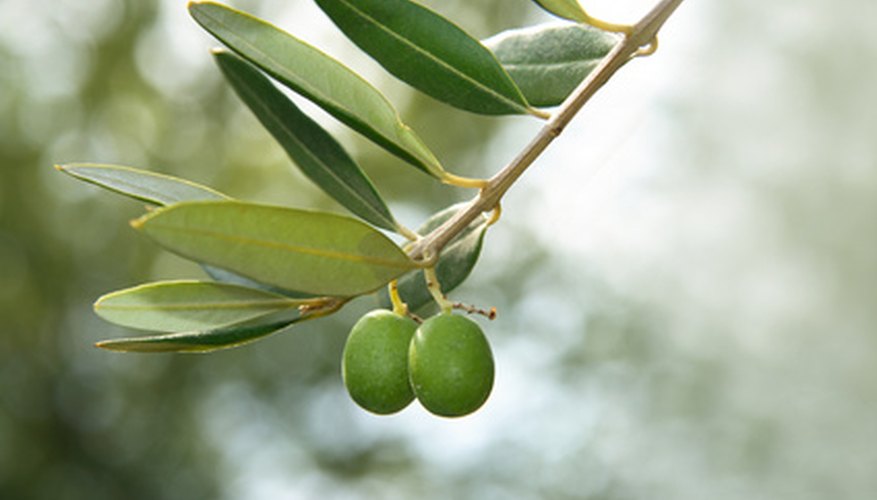The olive tree is an evergreen variety that requires a long growing season with hot weather to produce fruit. The tree is native to areas in the Mediterranean and tropical areas in Asia and Africa where the temperatures do not drop below -1.11 degrees C (30 degrees F). Olive trees propagate best through the collection of hardwood cuttings during the dormant season. An olive tree produced through stem cutting propagation will begin producing olive fruit approximately four years after root development.
Wash a sharp knife in a solution made from nine parts water and one part bleach. Let the knife dry prior to using.
Cut 25 to 30 cm (10 to 12 inch) hardwood stems from the olive tree. Choose branch sections that are two years old with a diameter of 2.5 cm (1 inch).
- The olive tree is an evergreen variety that requires a long growing season with hot weather to produce fruit.
- Cut 25 to 30 cm (10 to 12 inch) hardwood stems from the olive tree.
Prepare a propagation tray with a depth of at least 20 cm (8 inches) for the long olive stem cuttings. Mix equal amounts of sterile peat moss, course horticulture sand and perlite. Moisten the mixture with water and pour it in to fill the propagation tray.
Pour a small amount of powdered rooting hormone onto a piece of clean waxed paper. Dip the cut end of the olive stem into the hormone and immediately stick the cutting into the propagation tray to a depth that is one-half the length of the cutting.
- Prepare a propagation tray with a depth of at least 20 cm (8 inches) for the long olive stem cuttings.
- Dip the cut end of the olive stem into the hormone and immediately stick the cutting into the propagation tray to a depth that is one-half the length of the cutting.
Mist the olive stems with water and place a plastic bag over the tray and cuttings to create a humid environment. Place the propagation tray in a warm area that receives bright, indirect sunlight. The top of a refrigerator is an ideal area if light is available.
Monitor the olive hardwood stems and mist them one to two times each day as needed to keep the environment humid. Do not saturate the soil, as this will cause the stems to rot.
Pull on the olive hardwood stems after six months of growth to see if there is resistance from roots. Move the soil to verify the length of the roots.
Transplant the olive cuttings to 10 cm (4 inch) individual growing containers filled with sterile potting soil once the roots are a minimum of 2.5 cm (1 inch) in length. Grow the cuttings in the individual containers indoors for one year to create a strong root system before planting outdoors.
TIP
Set the propagation tray on a warm germination mat if a warm area is not available.
